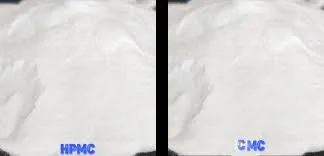
Jul . 10, 2024 16:32 Back to list
Hypromellose What Does HPMC Stand for and What Is Its Full Form?
Hydroxypropyl methylcellulose (HPMC) is a versatile and widely used ingredient in a variety of industries, including pharmaceuticals, cosmetics, and food products. In this article, we will explore the full form of HPMC and its various applications.
HPMC is a derivative of cellulose, which is a natural polymer found in plant cell walls. The full form of HPMC is hydroxypropyl methylcellulose, which reflects the chemical structure of the compound. HPMC is produced by treating cellulose with a combination of propylene oxide and methyl chloride, which results in a water-soluble polymer with various beneficial properties.
One of the key properties of HPMC is its ability to thicken and improve the texture of liquid formulations. This makes it a popular ingredient in personal care products such as shampoos, lotions, and creams. In these products, HPMC helps to create a smooth and creamy consistency that is easy to apply and provides a pleasant sensory experience for the user.
In the pharmaceutical industry, HPMC is commonly used as a binder in tablet formulations. By adding HPMC to the formulation, pharmaceutical companies can improve the cohesion and compressibility of the powder mixture, resulting in tablets that are more durable and less likely to break during handling and transport. HPMC can also act as a film-forming agent in tablet coatings, providing a protective barrier that helps to mask unpleasant tastes and odors

hpmc full form. Another important application of HPMC is as a viscosity modifier in food products. In low concentrations, HPMC can be used as a thickening agent to give sauces, dressings, and other liquid foods a more appealing texture. In higher concentrations, HPMC can be used to create gels and other structured food products that have a unique mouthfeel and stability. In addition to its role as a thickening agent, HPMC also has film-forming properties that make it useful in a variety of industrial applications. For example, HPMC can be used as a protective coating for seeds and fertilizers, helping to improve their handling and storage properties. HPMC can also be used as a binder in ceramic and paper products, providing strength and cohesion to the final material. Overall, HPMC is a versatile and valuable ingredient that plays a critical role in a wide range of industries. Its unique combination of properties, including thickening, film-forming, and binding capabilities, make it an essential component in many products that we use every day. Whether you are applying lotion to your skin, swallowing a tablet, or enjoying a delicious sauce, chances are that HPMC is working behind the scenes to enhance your experience.

hpmc full form. Another important application of HPMC is as a viscosity modifier in food products. In low concentrations, HPMC can be used as a thickening agent to give sauces, dressings, and other liquid foods a more appealing texture. In higher concentrations, HPMC can be used to create gels and other structured food products that have a unique mouthfeel and stability. In addition to its role as a thickening agent, HPMC also has film-forming properties that make it useful in a variety of industrial applications. For example, HPMC can be used as a protective coating for seeds and fertilizers, helping to improve their handling and storage properties. HPMC can also be used as a binder in ceramic and paper products, providing strength and cohesion to the final material. Overall, HPMC is a versatile and valuable ingredient that plays a critical role in a wide range of industries. Its unique combination of properties, including thickening, film-forming, and binding capabilities, make it an essential component in many products that we use every day. Whether you are applying lotion to your skin, swallowing a tablet, or enjoying a delicious sauce, chances are that HPMC is working behind the scenes to enhance your experience.
Latest news
-
Versatile Hpmc Uses in Different Industries
NewsJun.19,2025
-
Redispersible Powder's Role in Enhancing Durability of Construction Products
NewsJun.19,2025
-
Hydroxyethyl Cellulose Applications Driving Green Industrial Processes
NewsJun.19,2025
-
Exploring Different Redispersible Polymer Powder
NewsJun.19,2025
-
Choosing the Right Mortar Bonding Agent
NewsJun.19,2025
-
Applications and Significance of China Hpmc in Modern Industries
NewsJun.19,2025
Related PRODUCTS







